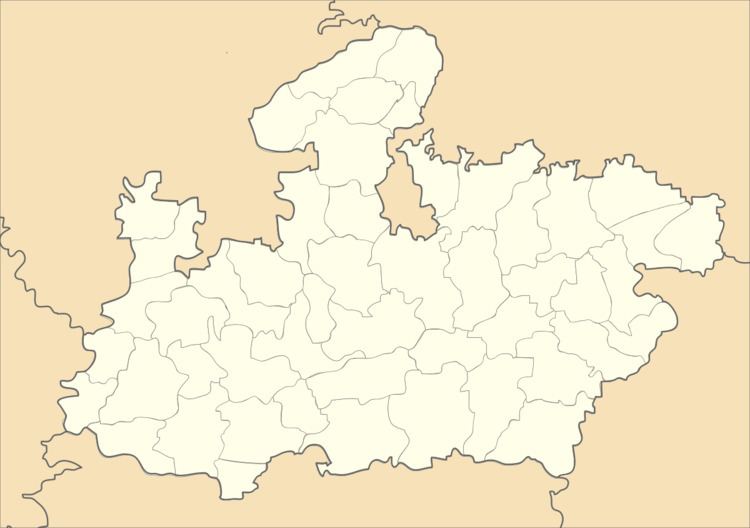Country India Region Gird Time zone IST (UTC+5:30) Elevation 196 m Population 1.054 million (2011) | PIN 474001 (HPO) Area 362 km² | |
 | ||
The Gwalior Inscription of Mihirakula is an epigraphic record documenting the construction of a temple dedicated to Sūrya by an individual named Mātṛcheṭa in the 15th year of the Hūṇa king Mihirakula. It can be assigned to the first part of the sixth century CE.
Contents
Location
Gwalior is located in northern Madhya Pradesh, India. The shrine probably stood on the edge of the tank known as Surāj Kuṇḍ on Gwalior Fort. The inscription is reported to be in the Indian Museum.
Publication
The inscription was published by John Faithfull Fleet in 1888. It was subsequently noted by Bhandarkar, Garde, Dvivedī and Willis in their respective epigraphic lists. An edition was published by D. C. Sircar in his Select Inscriptions.
Description and Contents
The inscription is written in Sanskrit and opens with a poetic account of the Sun god. The purport is to record that a temple was built for the god on the hill (presumably Gwalior fort) in the month of Kārttika in the 15th year of Mihirakula. Mātṛcheṭa, the son of Mātṛdāsa, was the patron. The inscription was composed by Keśava and [Dev?*]āditya.
Translation
[Ôm!] May he (the Sun) protect you, who is victorious,-dispelling the darkness of the banks of clouds with the masses of the multitude of his rays that light up the sky; (and) decorating the top of the side of the mountain of dawn with (his) horses, which have the tossing ends of (their) manes deshevelled through the fatigue (induced) by (their) startled gait;-(and) who,-having (his) chariot-wheels (?) swallowed (?)…………. The mountain of dawn; dispelling distress; (being) the light of the house which is the world; (and) effecting the destruction of night,-creates the fresh beauty of the waterlilies by (his) rays which are of the colour of molten gold! (Line 2.)-(There was) a ruler of [the earth], of great merit, who was renowned by the name of the glorious Tôramâna; by whom, through (his) heroism that was specially characterised by truthfulness, the earth was governed with justice. (L. 3.)-Of him, the fame of whose family has risen high, the son (is) he, of unequalled prowess, the lord of the earth, who is renowned under the name of Mihirakula, (and) who, (himself) unbroken, [broke the power of] Pasupati. (L. 4.)-While [he], the king, the remover of distress, possessed of large and pellucid eyes, is governing the earth; in the augmenting reign, (and) in the fifteenth year, of (him) the best of kings; the month Kârttika, cool and fragrant with the perfume of the red and blue waterlilies that are caused to blossom by the smiles of the rays of the moon, having come; while the spotless moon is shining; and a very auspicious day,-heralded by the chiefs of the classes of the twice-born with the noise of the proclamation of a holy day, (and) possessed of the (proper) tithi and nakshatra and muhûrta,-having arrived;- (L. 5.)-The son’s son of Matritula, and the son of Mâtridâsa, by the name Mâtrichêta, an inhabitant of ………… on the hill, has caused to be made, on the delightful temple, the chief among the best of temples, of the Sun, for the purpose of increasing the religious merit of (his) parents and of himself, and of those who, by the ……… of the king, dwell on this best of mountains. (L. 7.)-Those who cause to be made an excellent house of the Sun, like in lustre to the rays of the moon,-their abode is in heaven, until the destruction of all things! (L. 7.)-(This) very famous proclamation of the true religion has been composed through devotion to the Sun, by him who is renowned by the name of Kesava and by…. ditya. (L. 8.)-As long as the moon shines on the thicket that is the knot of the braided hair of (the god) Sarva; and as long as the mountain Mêru continues to have (its) slopes adorned by the feet of the nymphs of heaven; and as long as (the god) Vishnu bears the radiant (goddess) Srî upon (his) breast which is like a dark-blue cloud;-so long (this) chief of [stone]-temples shall stand upon the delightful summit of the hill!
